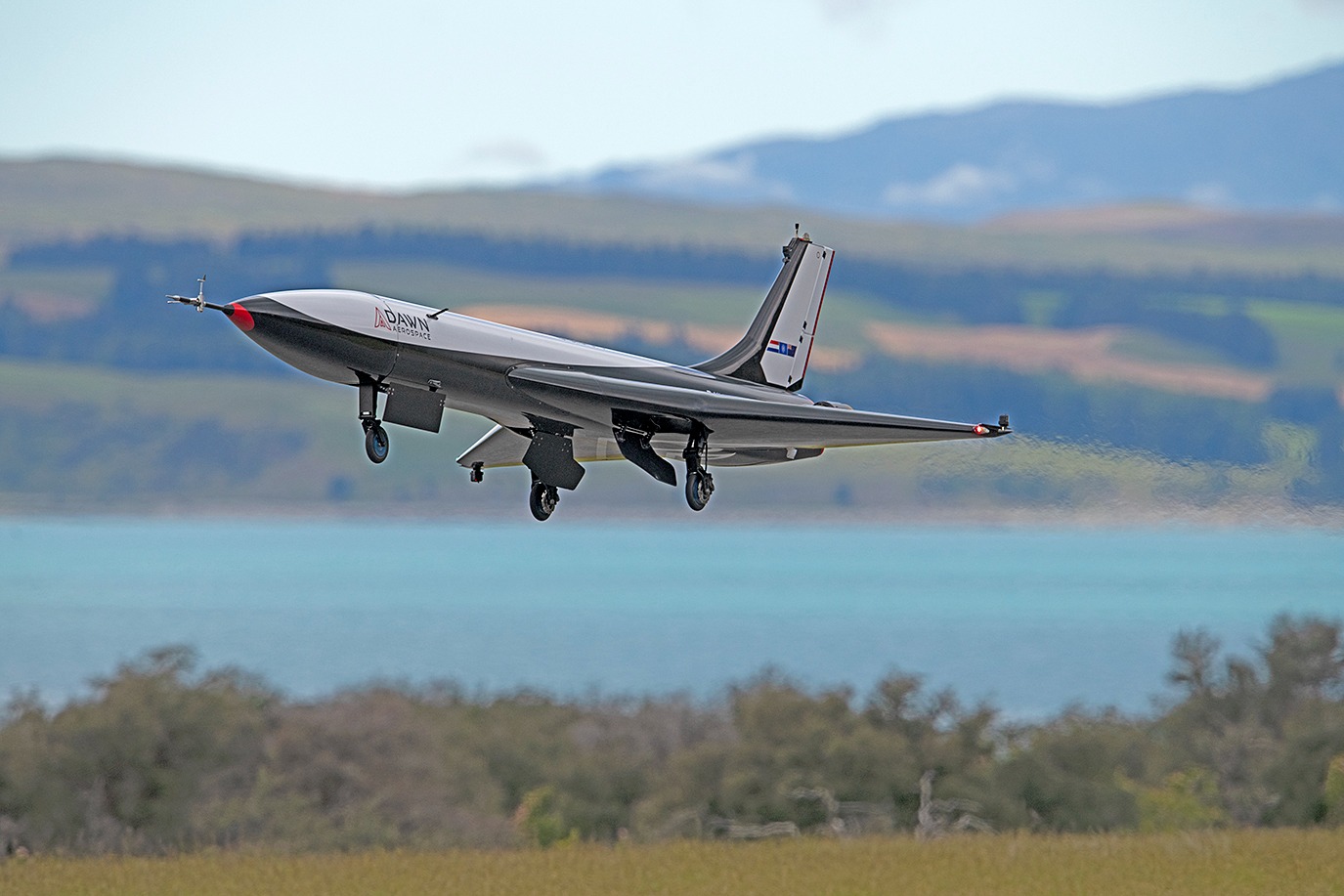Dawn Aerospace’s rocket-powered unmanned airplane reached new heights during its latest test campaign in an attempt to become the fastest airplane to take off from a runway.

In a series of three flights in late July, the Mk-II Aurora rocket plane reached a speed of 1,127 km/h (Mach 0.92) and an altitude of 15,240 meters (50,000 feet), triple the previous results. The next campaign in September involves a supersonic flight.
The Mk-II is a development paving the way for the Mk-III two-stage orbital airplane. Dawn aims to realize the potential of the Mk-IIB, the next supersonic iteration.
“By the end of 2025, we’re looking to climb faster than an F-15, fly higher than a MiG-25, faster than an SR-71, and, ultimately, be the first vehicle to fly above the Kármán line; 100km altitude, twice in a single day. Some of these records have stood for over 50 years,” the company blog said.
The company sees two main directions for development. The first is spacecraft for remote sensing, Earth observation and atmospheric research. The second is vehicles for high-speed atmospheric flight, hypersonic testing, transportation and microgravity research.
Dawn co-founder and CEO Stefan Powell said, “We’re looking at still relatively small vehicle designs that would be optimized for each of those applications. The Mk-IIB can do a little bit of both, and so it’s allowing us to dip our toes into the commercial side of both aspects. So we’re pretty active in market now, talking to lots of customers who would be wanting to do one or these other things.”
Dawn has raised $15 million in funding and spent $10 million on the flight program, with plans to complete it for less than $20 million. The company’s main revenue comes from small satellite propulsion systems.
Co-founder and CFO James Powell has a background in airplanes and notes that aviation makes it possible to have low operating costs, rapid reuse, and high reliability. Powell also emphasizes the importance of creating “an aircraft with the characteristics of a rocket, not a missile with wings.” This avoids the high risks and costs typical of traditional rocket launches.
“Launching from the air is not efficient. Our goal is to achieve rocket effectiveness using an airplane approach,” explains James Powell.
Earlier we reported on how Sierra Space announced a fast space delivery service in 90 minutes to anywhere in the world.
According to techcrunch.com


